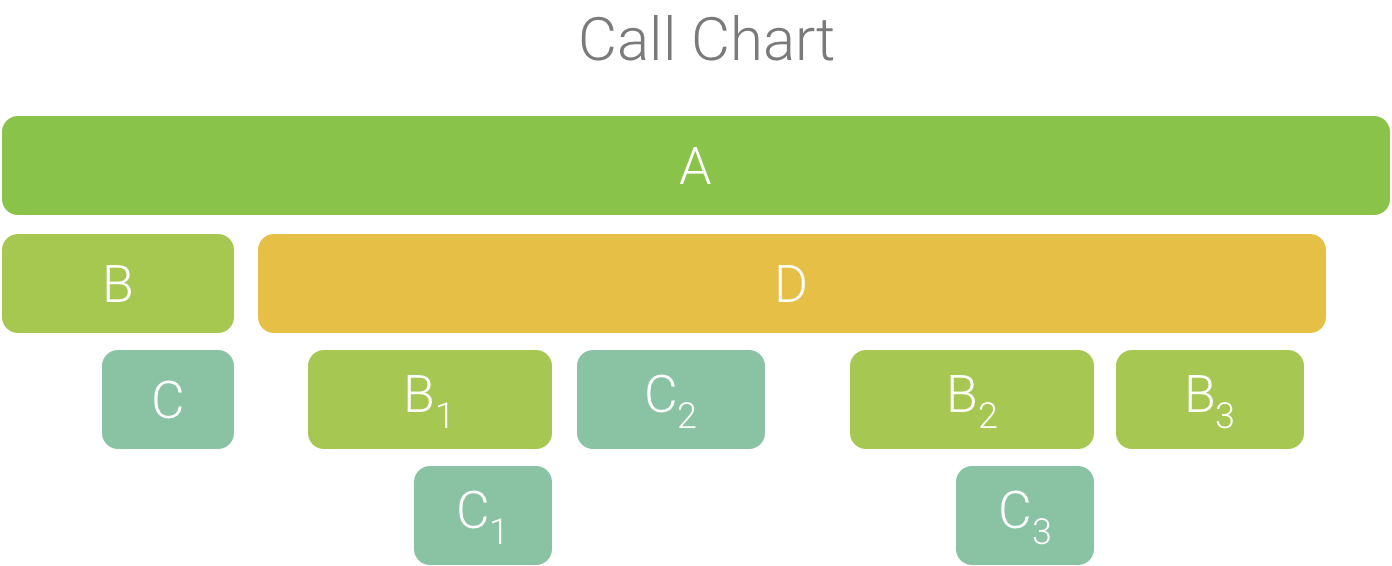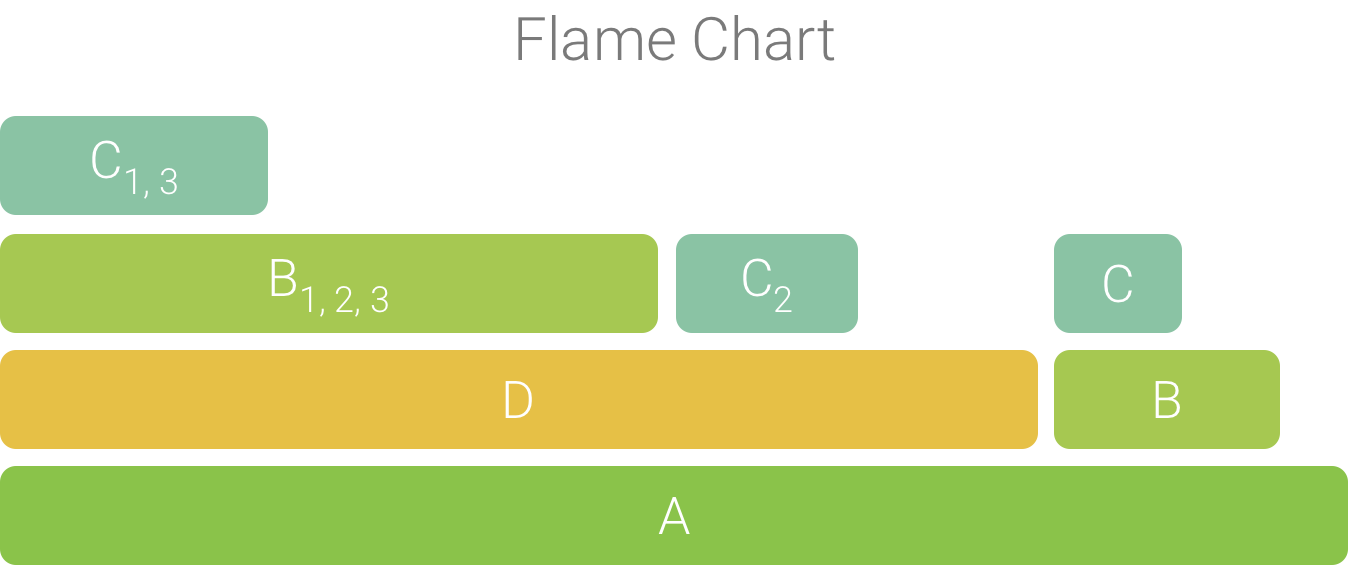แท็บแผนภูมิเปลวไฟแสดงแผนภูมิการเรียกแบบกลับด้านที่รวบรวม สแต็กการเรียกที่เหมือนกัน กล่าวคือ ระบบจะรวบรวมเมธอดหรือฟังก์ชันที่เหมือนกันซึ่งใช้ลำดับผู้โทรเดียวกัน และแสดงเป็นแถบที่ยาวขึ้นใน แผนภูมิเปลวไฟ (แทนที่จะแสดงเป็นแถบที่สั้นกว่าหลายแถบ ดังที่แสดงใน แผนภูมิการเรียก) ซึ่งจะช่วยให้คุณดูได้ง่ายขึ้นว่าเมธอดหรือฟังก์ชันใดใช้เวลามากที่สุด อย่างไรก็ตาม การดำเนินการนี้ยังหมายความว่าแกนนอนไม่ได้แสดงไทม์ไลน์ แต่จะแสดงระยะเวลาสัมพัทธ์ที่แต่ละเมธอดหรือฟังก์ชันใช้ในการดำเนินการแทน
ดูแผนภูมิการเรียกใช้ในรูปที่ 1 เพื่อช่วยอธิบายแนวคิดนี้ โปรดทราบว่าเมธอด D จะเรียก B หลายครั้ง (B1, B2 และ B3) และการเรียก B บางครั้งจะเรียก C (C1 และ C3)

รูปที่ 1 แผนภูมิการโทรที่มีการเรียกใช้เมธอดหลายรายการ ซึ่งใช้ลำดับผู้โทรร่วมกัน
เนื่องจาก B1, B2 และ B3 มีลำดับผู้โทรเหมือนกัน (A → D → B) ระบบจึงรวบรวมข้อมูลตามที่แสดงในรูปที่ 2 ในทํานองเดียวกัน ระบบจะรวบรวม C1 และ C3 เนื่องจากมีลําดับผู้โทรเหมือนกัน (A → D → B → C) โปรดทราบว่าระบบจะไม่รวม C2 เนื่องจากมีลําดับผู้โทรที่แตกต่างกัน (A → D → C)

รูปที่ 2 รวบรวมวิธีการที่เหมือนกันซึ่งใช้สแต็กการเรียกใช้เดียวกัน
ระบบจะใช้การเรียกที่รวบรวมไว้เพื่อสร้างแผนภูมิเปลวไฟ ดังที่แสดงในรูปที่ 3 โปรดทราบว่าสำหรับการเรียกใดๆ ในแผนภูมิเปลวเพลิง ผู้ถูกเรียกที่ใช้เวลา CPU มากที่สุดจะปรากฏก่อน

รูปที่ 3 แผนภูมิเปลวไฟแสดงการเรียก แผนภูมิที่แสดงในรูปที่ 5

